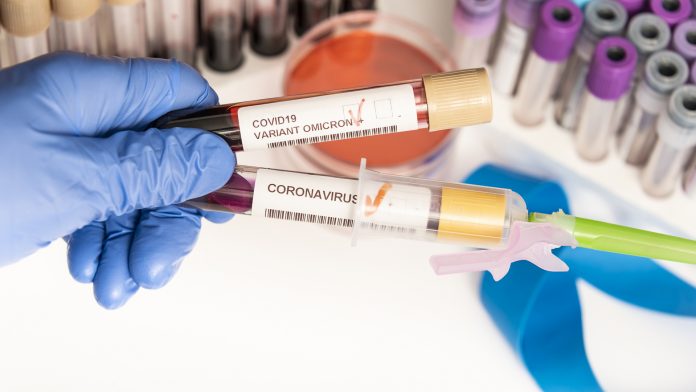
The Technical Advisory Group on SARS-CoV-2 Virus Evolution (TAG-VE), independent experts that periodically monitors and evaluates the evolution of SARS-CoV-2 and assess mutations and combinations of mutations altering the behaviour of the virus, have named Omicron (B.1.1.529) as a variant of concern (VOC).
The Omicron variant was first reported to the World Health Organisation (WHO) from South Africa on 24 November 2021. The epidemiological situation in South Africa has been characterised by three distinct peaks in reported cases, with the latest being caused by Delta Variant. However, infections have increased, coinciding with the detection of the Omicron variant, the first specimen of which was first collected on 9 November 2021.
Evaluating the Omicron variant
The Omicron variant has many mutations, some of which have been highlighted as concerning. Preliminary evidence suggests an increased risk of reinfection with this variant compared to other VOCs. The number of cases of this variant appears to be increasing in all provinces in South Africa, and current SARS-CoV-2 PCR diagnostics can detect Omicron.
Furthermore, lab tests have indicated that PCR tests fail to detect one of the three target genes called the S gene dropout or S gene target failure, and this test can be used as a marker for Omicron, pending sequencing confirmation. Using this approach means the variant can be detected at faster rates than previous surges in infection, suggesting that this variant may have a growth advantage.
There are several studies underway, and the TAG-VE will continue to evaluate this variant. WHO will communicate new findings with the Member States and to the public as needed.
Countries are expected to monitor the variant
Based on the evidence presented, the TAG-VE has advised WHO that this variant should be designated as a VOC. Due to this, countries have been advised by WHO to do the following:
- Enhanced surveillance and sequencing efforts to better understand circulating SARS-CoV-2 variants.
- Submit complete genome sequences and associated metadata to a publicly available database, such as GISAID.
- Report initial cases/clusters associated with VOC infections to WHO through IHR mechanism.
- Where capacity exists and in coordination with the international community, perform field investigations and laboratory assessments to improve understanding of the potential impacts of the VOC on COVID-19 epidemiology, severity, the effectiveness of public health and social measures, diagnostic methods, immune responses, antibody neutralisation, or other relevant characteristics.
The general public is advised to take measures to reduce their risk of COVID-19, including proven public health and social measures such as wearing masks, hand hygiene, physical distancing, improving the ventilation of indoor spaces, avoiding crowded spaces and getting vaccinated.
WHO has working definitions for SARS-CoV-2 Variant of Interest (VOI) and Variant of Concern (VOC).
A SARS-CoV-2 VOI is a SARS-CoV-2 variant:
- With genetic changes that are predicted or known to affect virus characteristics such as transmissibility, disease severity, immune escape, diagnostic or therapeutic escape; and
- That has been identified as causing significant community transmission or multiple COVID-19 clusters in multiple countries with increasing relative prevalence alongside increasing the number of cases over time or other apparent epidemiological impacts to suggest an emerging risk to global public health.
A SARS-CoV-2 VOC is a SARS-CoV-2 variant that meets the definition of a VOI and, through a comparative assessment, has been demonstrated to be associated with one or more of the following changes at a degree of global public health significance:
- Increase in transmissibility or detrimental change in COVID-19 epidemiology; or
- Increase in virulence or change in clinical disease presentation; or
- Decrease in the effectiveness of public health and social measures or available diagnostics, vaccines, therapeutics.
























